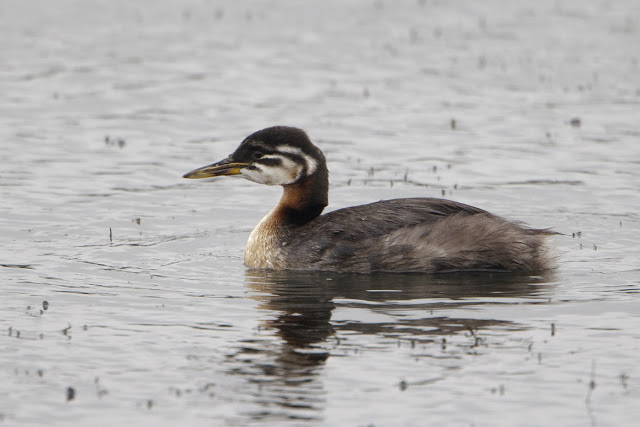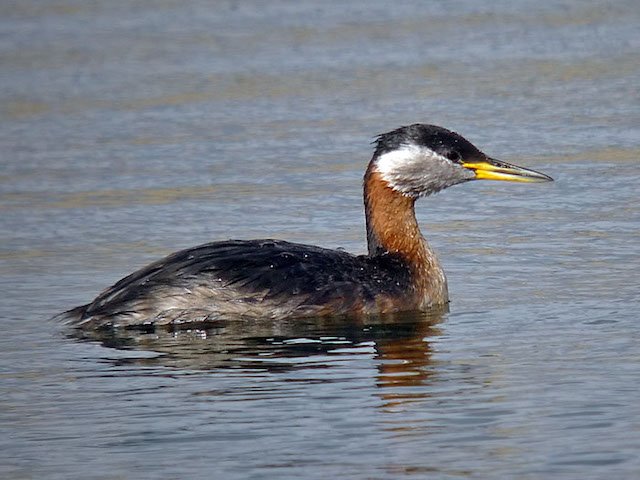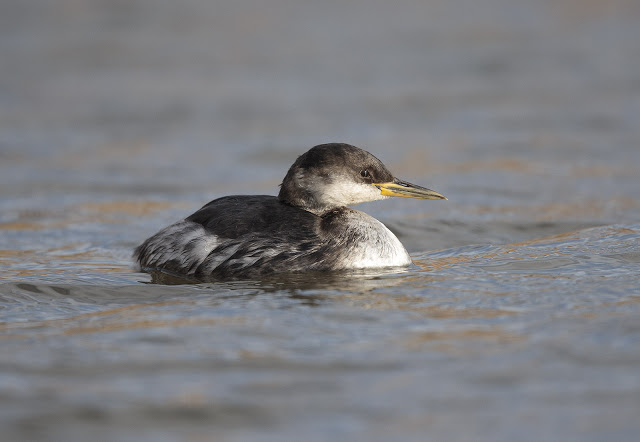Red-necked Grebe Podiceps grisigena
Scarce and more recently, very scarce passage migrant and winter visitor, September-April; rare in summer.



Red-necked Grebe: left, juvenile Barton Pits September 27th 2010 (Graham Catley); centre, Covenham Reservoir August 26th 2012 (Russell Hayes);
right, Barton Pits January 28th 2016 (Graham Catley).
Found along the coast and inland, numbers vary from year to year. Lorand and Atkin (1989) mention significant cold-weather influxes which occurred in January-February 1865 and in January-February 1937. More recently there was an influx of over 100 birds in mid-February 1979. In more modern times LBR reports indicate that the average over the last five years to 2018 was eight (range five to 12) and in the previous five years to 2013, 12 (range six to 18). The best year over the 10-year period with 18 was 2012, a relatively hard winter. Records were split about 60/40 between coast and inland and across the whole 10-year period there were 18 long-stayers (birds that stayed on an inland water for three days or more), and three years with no long-stayers. Of the 18, 12 were at Covenham Reservoir. There were no summer records in the period. Red-necked Grebe is too scarce for WeBS to produce an index and WeBS data indicates the rolling mean five-year UK wintering population to 2018-19 was 19 while in the previous five-year period to 2013-14 it was 24.
(Account as per new Birds of Lincolnshire (2021), included September 2022)
